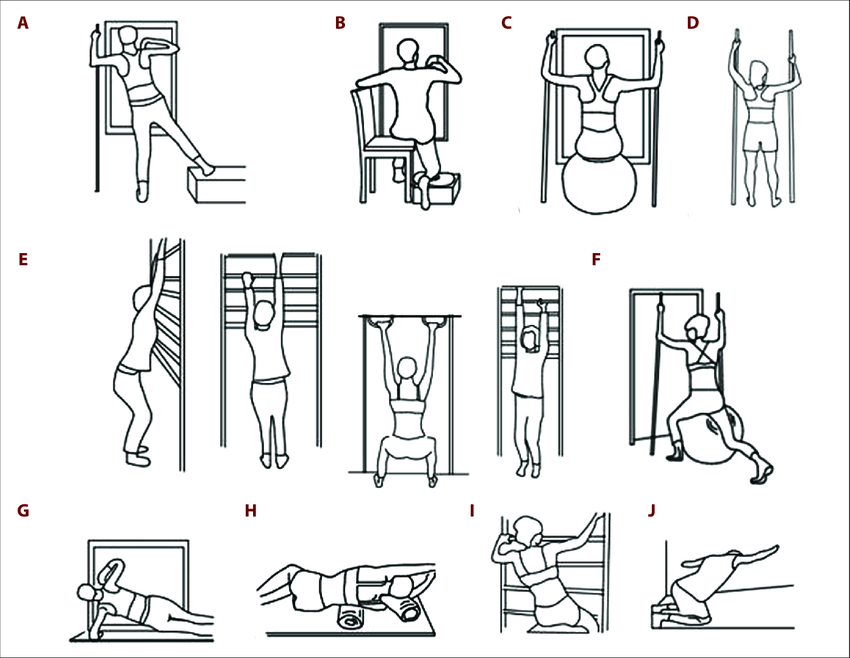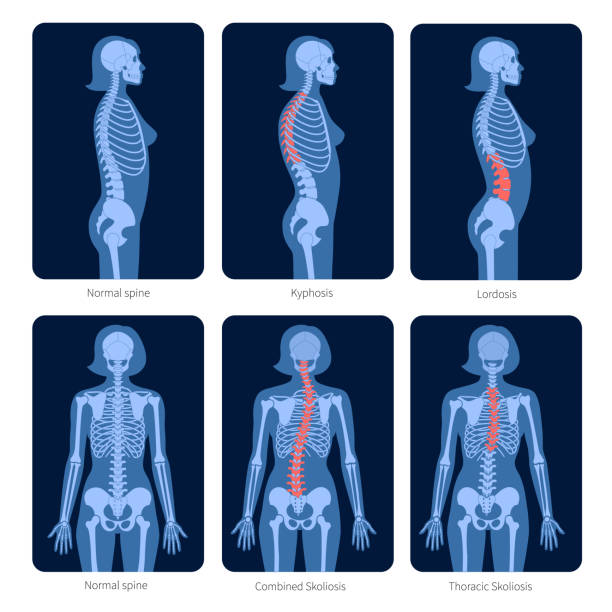Introduction
In the context of present-day public health concerns, the issues of posture are often overlooked. However, while the shift in the focus of health management is understandable given the greater threat, addressing musculoskeletal concerns is also necessary. Due to the effects that abnormal spine curvature and the associated issues may have on the rest of the body systems and their functioning, as well as the performance of specific organs, issues such as scoliosis warrant a closer look. By introducing strategies for preventing scoliosis in younger patients, as well as managing it in adults, healthcare experts will be able to reduce the extent of public health issues associated with comorbid conditions.
Scoliosis
Description
The phenomenon of scoliosis is typically defined as the “3-dimensional deformity of the spine” (Black et al., 2017, p. 1). Although the specified definition might seem too broad, it allows for capturing the full gamut of abnormalities observed in the snail section of the skeletal structure, which justifies the specified choice of a definition. Some sources specify that scoliosis implies a sideways deformity, particularly a sideways curve, which allows setting the specified disease apart from other spinal deformities, such as lordosis and kyphosis (Applebaum et al., 2021). Therefore, the full definition of scoliosis can be summarized as a three-dimensional, sideways, curve-shaped deformity of the spine typically observed in early adolescence (Black et al., 2017).
Causes
As a rule, scoliosis is identified at a fairly early stage of childhood development. The disease may develop under the influence of several factors. The most common explanations for the nature of scoliosis include cerebral palsy, birth defects, spinal injuries, and muscular dystrophy (Popko et al., 2018). However, presently, the exact nature of scoliosis remains mostly unknown due to the lack of research on the subject matter (Popko et al., 2018). Therefore, further analysis of the factors that influence the development of scoliosis in children will need to be undertaken. Remarkably, several studies indicate that women are prone to developing scoliosis to a significantly larger degree than men (Popko et al., 2018). However, unlike early-onset scoliosis, degenerative one can be explained by the development of muscular atrophy as a result of specific health-related conditions, such as cerebral palsy (Popko et al., 2018).
Prevention
Since the exact causes of scoliosis are currently unknown, the prevention strategies are quite numerous yet lacking substantiation. As a result, there is presently no homogenous framework for preventing the development of early-onset scoliosis (Applebaum et al., 2021). In turn, De Nuovo scoliosis, or degenerative scoliosis, can be prevented in adults by introducing the specified audience to exercises allowing them to reinforce their musculoskeletal system (Applebaum et al., 2021). Thus, muscular atrophy that typically causes the emergence of degenerative scoliosis can be avoided.
Schroth Method
Though scoliosis prevention is typically deemed impossible, options such as the Schroth Method are widely used nowadays. The Schroth Method can be used for all ages and contains several components. Namely, the Schroth Method implies restoring the patient’s posture and musculoskeletal symmetry and changing the breathing rhythm (Stergiou, 2018). The Schroth Method seeks to elongate the spine, thus, reducing its curvature while also rotating it so that it can be straightened without damaging other areas (Stergiou, 2018). Allowing the weakened and rarely used muscles to regain their potential and strength, the Schroth Method can be seen as a powerful framework for preventing scoliosis.

Effects
Although the aesthetic side of the disorder is typically the most commonly discussed by patients, scoliosis has multiple negative effects that are much more severe and represent a significantly larger threat. Specifically, scoliosis may entail the emergence and rapid development of painful sensations in a patient’s neck and back. Additionally, pain in the areas of the hips, knees, and legs is also traditionally observed as the essential symptom of scoliosis and its inevitable health effects (Tao et al., 2020). Therefore, apart from its aesthetic effects, scoliosis also has a range of adverse effects on a patient’s health. Furthermore, people with scoliosis are prone to developing radicular nerve pain, which reduces the quality of their lives drastically (Tao et al., 2020). Finally, difficulties breathing while sleeping, as well as performing certain daily physical activities, some of them as simple as walking, can be observed in patients with scoliosis.
Treatment Options
Although there is currently no cure for scoliosis, several approaches to managing it and improving the quality of patients’ lives have been designed. Currently, the available treatment options represent a combination of physical therapy, exercises, medical observations, and chiropractic treatment (Tao et al., 2020). The choice of treatment and its intensity depends on the patient’s age and disease progression. As a rule, children need only mild physical therapy and exercises. Later stages involve the use of braces in children (Tao et al., 2020). Finally, surgery is applied to scenarios involving aggravated situations, particularly in adult patients (Tao et al., 2020). Among key surgical options, one must mention spinal fusion (adults), the injection of an expanding rod (children), and vertebral body tethering (children).
Strengths & Weaknesses
The proposed treatment options have their advantages and disadvantages.
Specifically, mild physical therapy and exercises have a rather poor and barely noticeable effect on the disease and the patient’s well-being. In turn, braces affect the development of the musculoskeletal system negatively, often leading to further deterioration thereof (Van Rooyen et al., 2019). However, the opportunity to prevent the progression of the disease, which braces provide, is not to be underrated. Similarly, exercises provide a useful way of minimizing the threat of further development of scoliosis (Van Rooyen et al., 2019). The obvious advantage of surgery is the opportunity to correct the issue promptly and introduce long-lasting change. However, surgical interventions may lead to further aggravation unless implemented impeccably.
Cure
As emphasized above, there is presently no cure for scoliosis. In adults, scoliosis has a natural propensity to become increasingly aggravating and lead to the gradual deterioration of the skeletal system (Van Rooyen et al., 2019). Therefore, curing scoliosis completely is presently impossible; moreover, it is unlikely that a cure is ever developed. However, as the description of the strategies provided above shows, the development of scoliosis can be reduced significantly.

Population
Scoliosis primarily affects children, leading to the gradual deterioration of patients’ condition as they mature and age (Applebaum et al., 2021). Observed in infancy and early childhood, in most cases, scoliosis affects women much more often than men (Applebaum et al., 2021). Nevertheless, due to the lack of accurate understanding of the factors that induce the development of scoliosis in patients, determining the key risk groups is quite complicated. Therefore, following a general standard for a healthy lifestyle and supporting proper musculoskeletal development, as well as developing a proper grasp of one’s family health history, are strongly recommended steps.
Research
As stressed above, the absence of thorough and profound research on the nature of scoliosis currently represents a major gap to be filled in the nearest future. However, the available studies on scoliosis expand upon the effectiveness of some of the interventions and therapies geared toward improving patients’ conditions.
Moreover, numerous studies address the issue e of diagnosing scoliosis s the means of addressing the problem at the earliest stages of its formation and development. For instance, the paper by Tao et al. (2020) indicates a rise in the efficacy of imaging methods for diagnosing the presence of scoliosis in children and infants.
Conclusion
Overall, the problem of scoliosis remains a major public health issue. Affecting patients at extraordinarily young ages, scoliosis remains incurable, with the existing treatment options providing only a minor opportunity for improvement in a patient’s condition. Therefore, the further management of the issue must be geared toward seeing the nature of scoliosis and, therefore, defining the means of curing it.
References
Applebaum, A., Nessim, A., & Cho, W. (2021). Overview and spinal implications of leg length discrepancy: Narrative review. Clinics in Orthopedic Surgery, 13(2), 127-134. Web.
Black, D. J., Pilcher, C., Drake, S., Maude, E., & Glynn, D. (2017). Current knowledge of scoliosis in physiotherapy students trained in the United Kingdom. Scoliosis and Spinal Disorders, 12(1), 1-9. Web.
Ledonio, C. G., Burton, D. C., Crawford III, C. H., Bess, R. S., Buchowski, J. M., Hu, S. S., & Sanders, J. O. (2017). Current evidence regarding diagnostic imaging methods for pediatric lumbar spondylolysis: A report from the scoliosis research society evidence-based medicine committee. Spine Deformity, 5(2), 97-101. Web.
Popko, J., Kwiatkowski, M., & Gałczyk, M. (2018). Scoliosis: Review of diagnosis and treatment. Polish Journal of Applied Sciences, 4(1), 31-35. Web.
Stergiou, C. (2018). The Schroth method of physical therapy for the treatment of idiopathic scoliosis. Journal of Research and Practice on the Musculoskeletal System, 2(03), 95-97. Web.
Van Rooyen, C., Du Plessis, L. Z., Geldenhuys, L., Myburgh, E., Coetzee, W., Vermeulen, N., & Burger, M. (2019). The effectiveness of Schroth exercises in adolescents with idiopathic scoliosis: A systematic review and meta-analysis. South African Journal of Physiotherapy, 75(1), 1-9. Web.